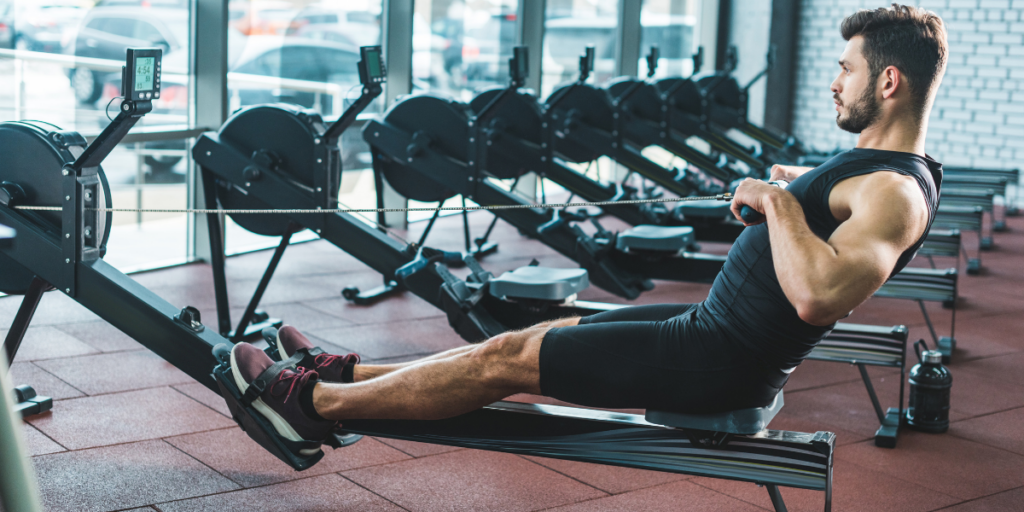No products in the cart.
4 Awesome Rowing Machine Benefits

Everyone has seen them in the gym. Next to all the treadmills, Stairmaster, and stationary bikes are these little devices with a seat, cable, and fan.
Of all the cardio machines in the gym, the rowing machine requires the least intuitive movement to use. This likely leads to the frequent underuse and misuse of the machines.
Rowing is the best of all cardio workouts at the gym. It uses all muscles in the body which improves cardiovascular fitness. The movement of the machine is also more intense and explosive than the other cardio machines, which can build muscular strength and endurance more efficiently. It’s a low impact workout, meaning it doesn’t put stress or strain on any one body part. And the workouts can be modified to fit the rower’s needs – one can do short, fast-paced workouts or slower, long-distance workouts.
Despite this, rowing can cause injury if done improperly. Back and hip pain is common among seasoned rowers, and the injuries are usually caused by ongoing flaws in rowing technique. There is a specific technique required to ensure no extra stress in any one place. For anyone interested in using one of these, that’s great. Here are a few guidelines so that you all can use these as safely and efficiently as you can.
4 Awesome Rowing Machine Benefits
1. Catch
The catch is the starting position. The rower is seated with knees bent. The shoulders are relaxed and arms are extended out to the handle. The rower’s back is tall and bent at the waist, leaning forward towards the monitor. The rower’s chin is up and eyes pointed at the monitor.
2. Drive
The drive is the movement that produces the power in the stroke. The drive is a full body movement that is divided into three distinct parts: legs, back, then arms. The rower drives the legs first, then the back then finishes with the arms. The arms should never move the legs while the knees are still bent.
3. Finish
This is the position at which the rower’s body should be at the end of the drive. Legs are fully extended, the back is straight and bent backward slightly at the waist, and the arms are pulled into the chest.
4. Recovery
The recovery is the controlled movement that returns the rower to the catch. The movement is opposite that of the drive in that the rower moves the arms, then back, then legs. The recovery should be a slower and more controlled movement than the drive. A fast recovery does not mean the rower will drive more quickly and hence, go faster.
If you row for thirty minutes at a moderate pace, your body will burn anywhere between 210-311 calories. If you row aggressively, you will burn anywhere between 255-377 calories. Be safe, be careful, and above all, stretch before and after each workout. Do these, and you’ll be ready for an excellent new cardiovascular workout.
